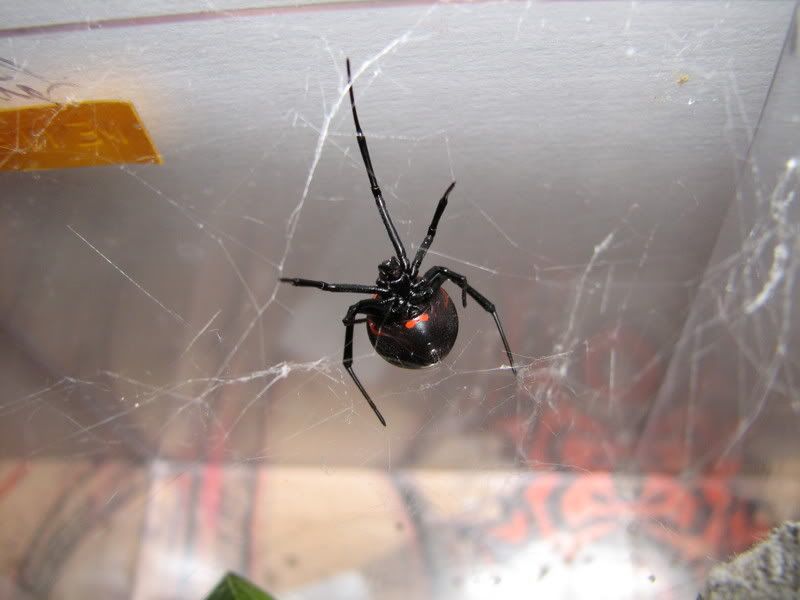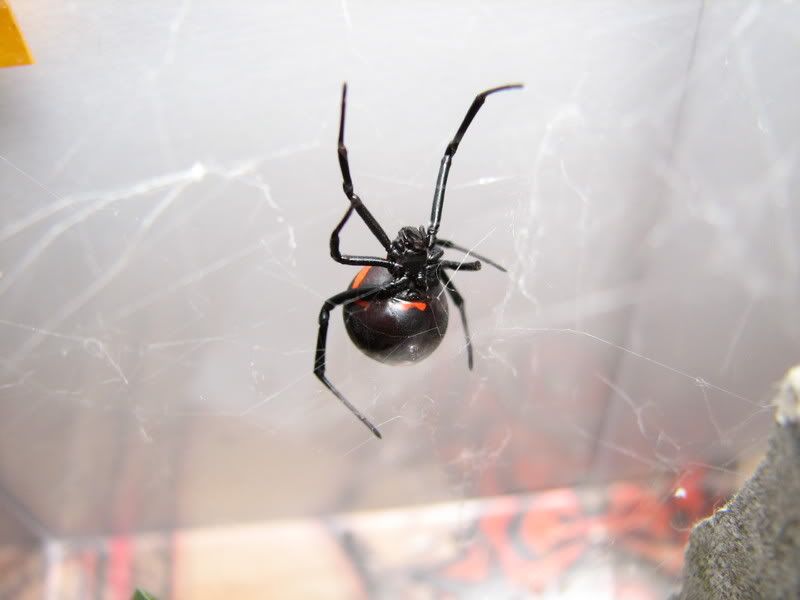- Joined
- Jun 8, 2006
- Messages
- 1,381
Found this boy as a small juv. Coming along nicely. 









For fem hesps, I use a combination of size and loss of dorsal markings to determine if she has gone through final molt ...though this can lead to surprises.How does one tell when a Latrodectus sp. has become an adult? I have several wc L. hesperus (best guess - in the CA high desert) but only one male - so how do I know when/which female to introduce him to?


